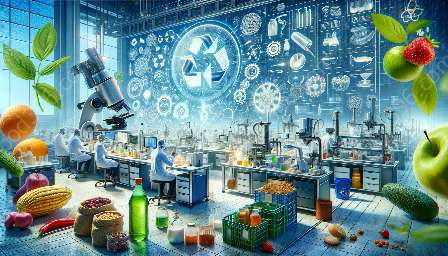Food waste is a significant global issue, and finding ways to add value to this waste can have a positive impact on food waste management and sustainability. In the field of food science and technology, innovative strategies are being developed to repurpose food waste and create value-added products.
Understanding Food Waste
Food waste is a complex problem that occurs at various stages of the food supply chain, including production, processing, distribution, and consumption. According to the United Nations Food and Agriculture Organization, approximately one-third of all food produced for human consumption is lost or wasted globally, amounting to about 1.3 billion tons per year.
This wastage not only represents a missed opportunity to address hunger and malnutrition but also has significant environmental, economic, and social impacts. Food waste contributes to greenhouse gas emissions, utilizes resources such as water and land inefficiently, and results in economic losses for businesses and households.
Value-Added Utilization
Value-added utilization involves the innovative repurposing of food waste to create new products or ingredients with enhanced value. This approach not only helps reduce the volume of food waste but also contributes to the development of sustainable solutions and the circular economy.
Applications in Food Waste Management
The value-added utilization of food waste plays a crucial role in food waste management by reducing the volume of waste that ends up in landfills or incineration facilities. Instead of treating food waste as a burden, it is transformed into a valuable resource. Through various processes such as biotransformation, extraction, and conversion, food waste can be turned into biofuels, animal feed, compost, fertilizers, and innovative food products.
Role of Food Science and Technology
Food science and technology are at the forefront of driving innovation in the value-added utilization of food waste. Researchers and industry professionals are exploring cutting-edge techniques for extracting valuable compounds from food waste, such as antioxidants, dietary fibers, and proteins. These compounds can then be incorporated into functional foods, dietary supplements, cosmetics, and pharmaceuticals.
Case Studies and Innovations
Several success stories exemplify the potential of value-added utilization of food waste. For instance, breweries repurpose spent grains to produce high-protein flours and snacks. Fruit and vegetable processing waste is transformed into natural pigments and flavors for the food industry. Additionally, the conversion of food waste into bioplastics, packaging materials, and biodegradable films demonstrates the diverse applications of this approach.
Challenges and Opportunities
While the concept of value-added utilization of food waste offers promising benefits, there are challenges that need to be addressed. These include technological limitations, regulatory barriers, consumer acceptance, and economic viability. Overcoming these hurdles requires collaboration among stakeholders, investment in research and development, and the establishment of supportive policies and incentives.
Despite the challenges, the value-added utilization of food waste presents numerous opportunities for sustainable innovation, waste reduction, and the creation of value-added products. As the global focus on sustainable development grows, the importance of leveraging food waste as a valuable resource becomes increasingly evident.
Conclusion
The value-added utilization of food waste holds immense potential for addressing the pressing issue of food waste while contributing to sustainable food systems. Through interdisciplinary collaboration and the application of food science and technology, diverse avenues for repurposing food waste are being explored. By creating value-added products from what was once considered waste, we can steer towards a more sustainable and circular approach in the utilization of food resources.

